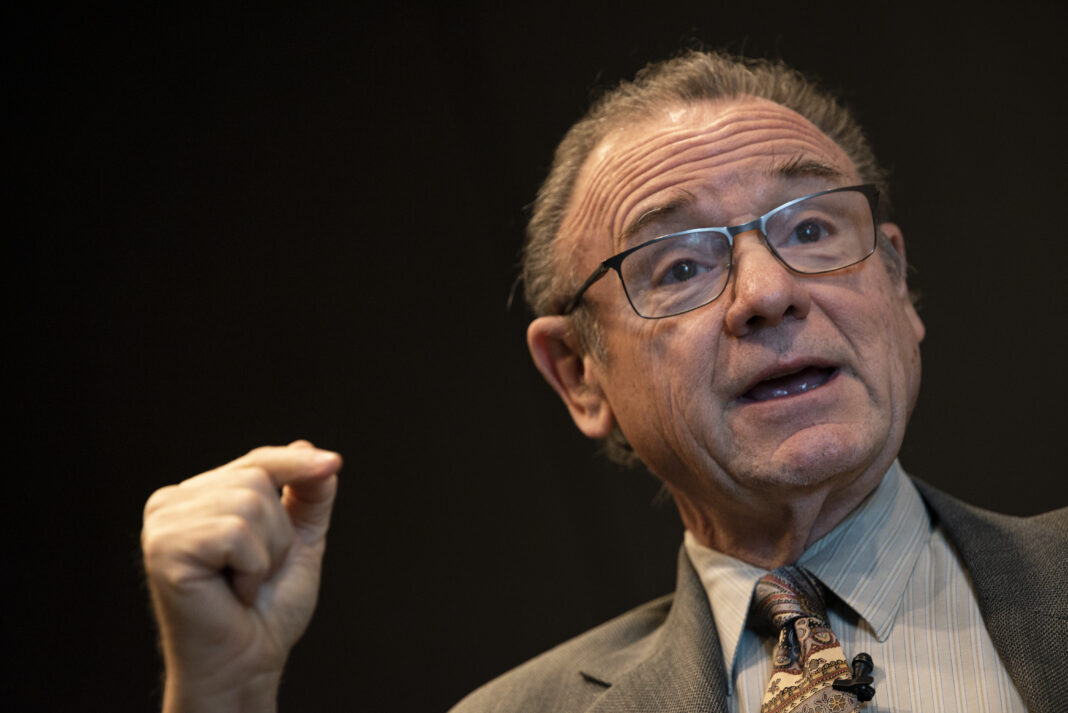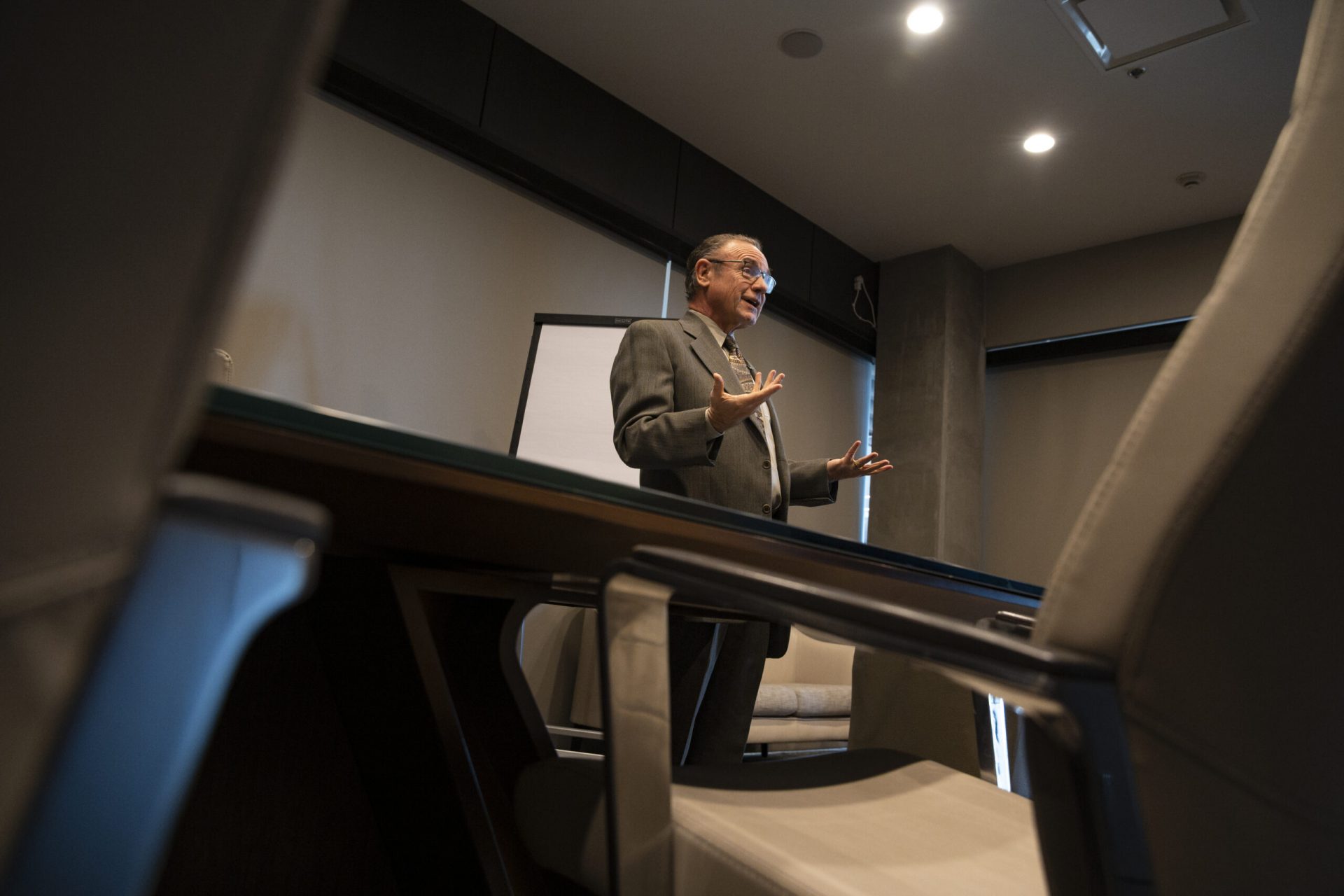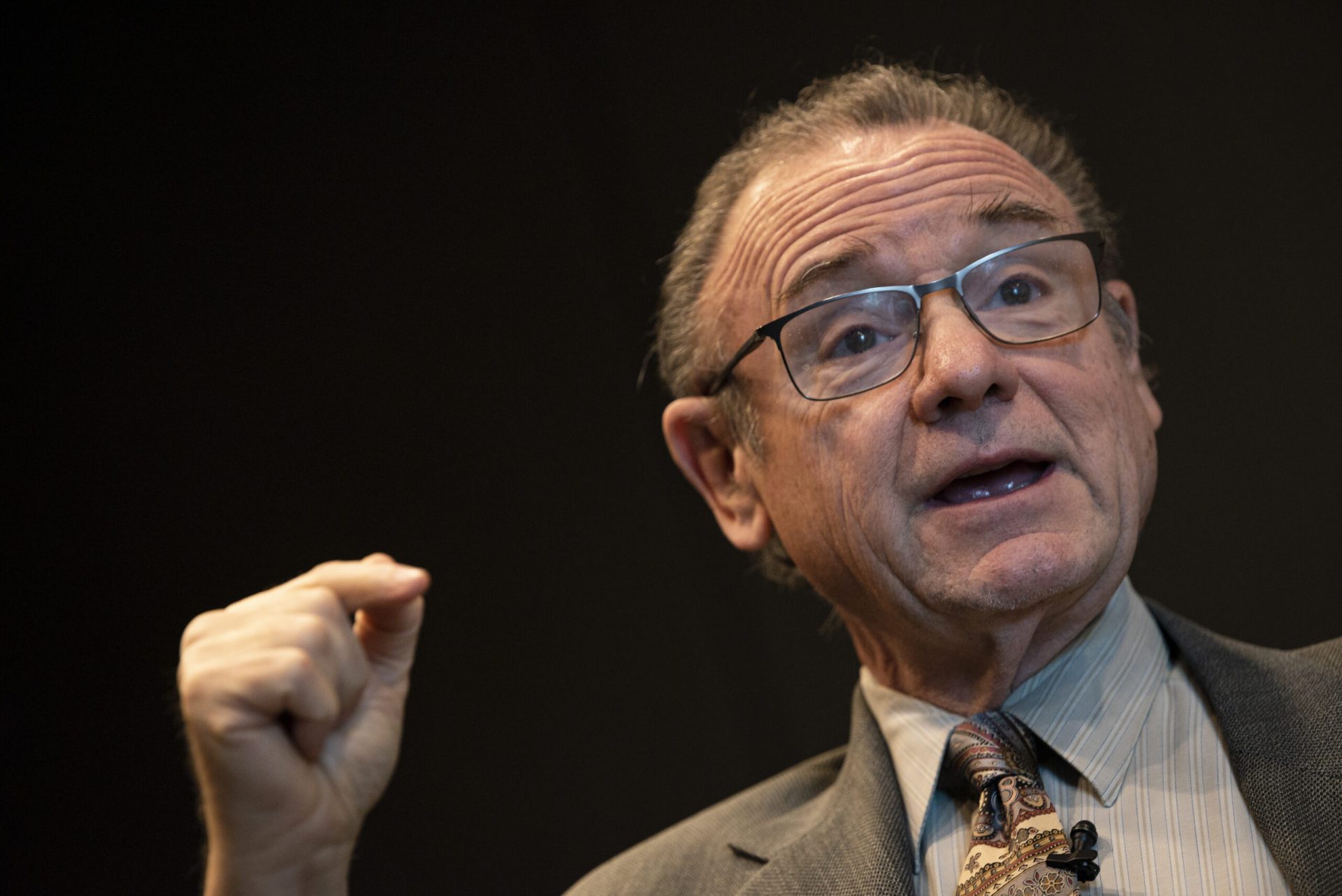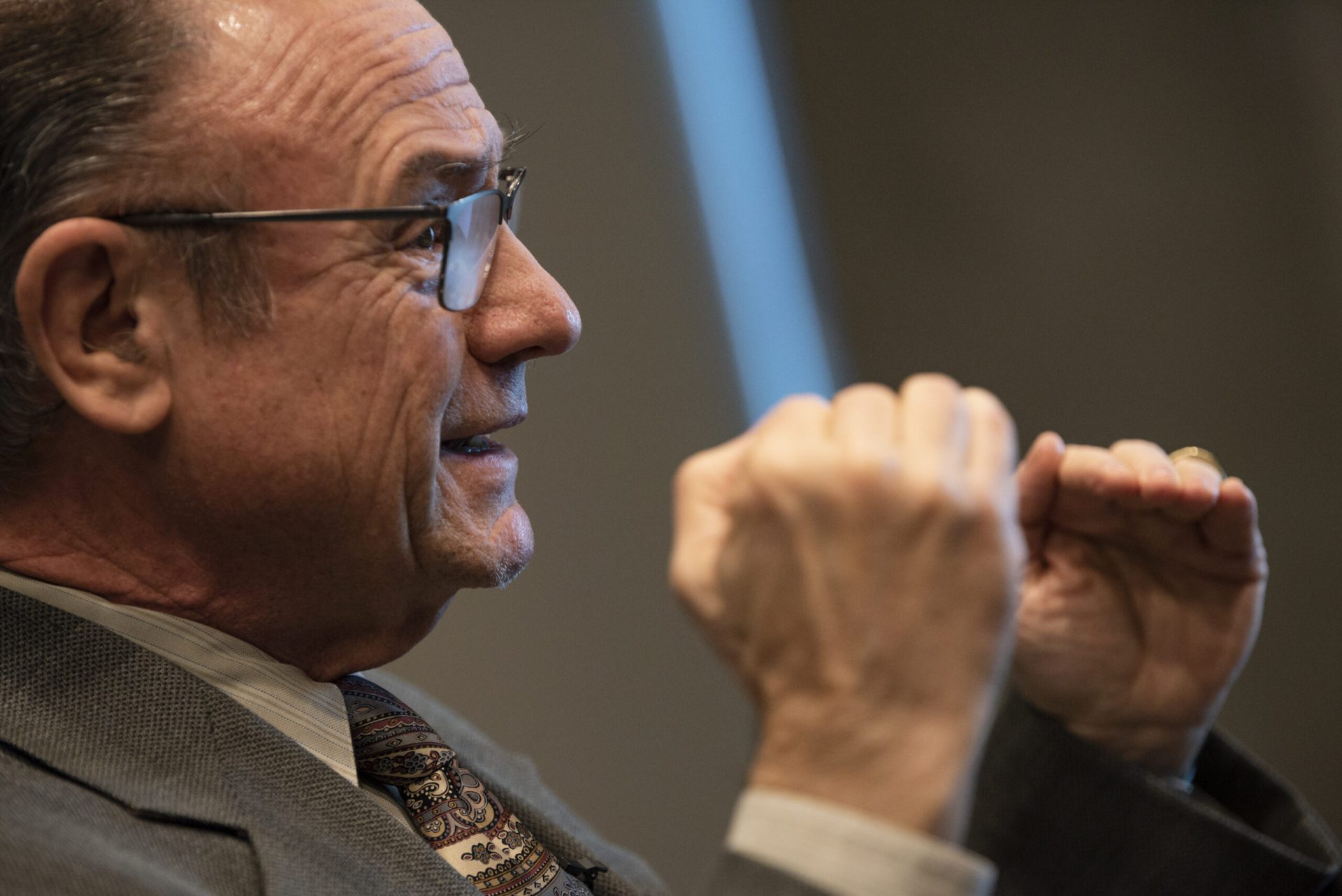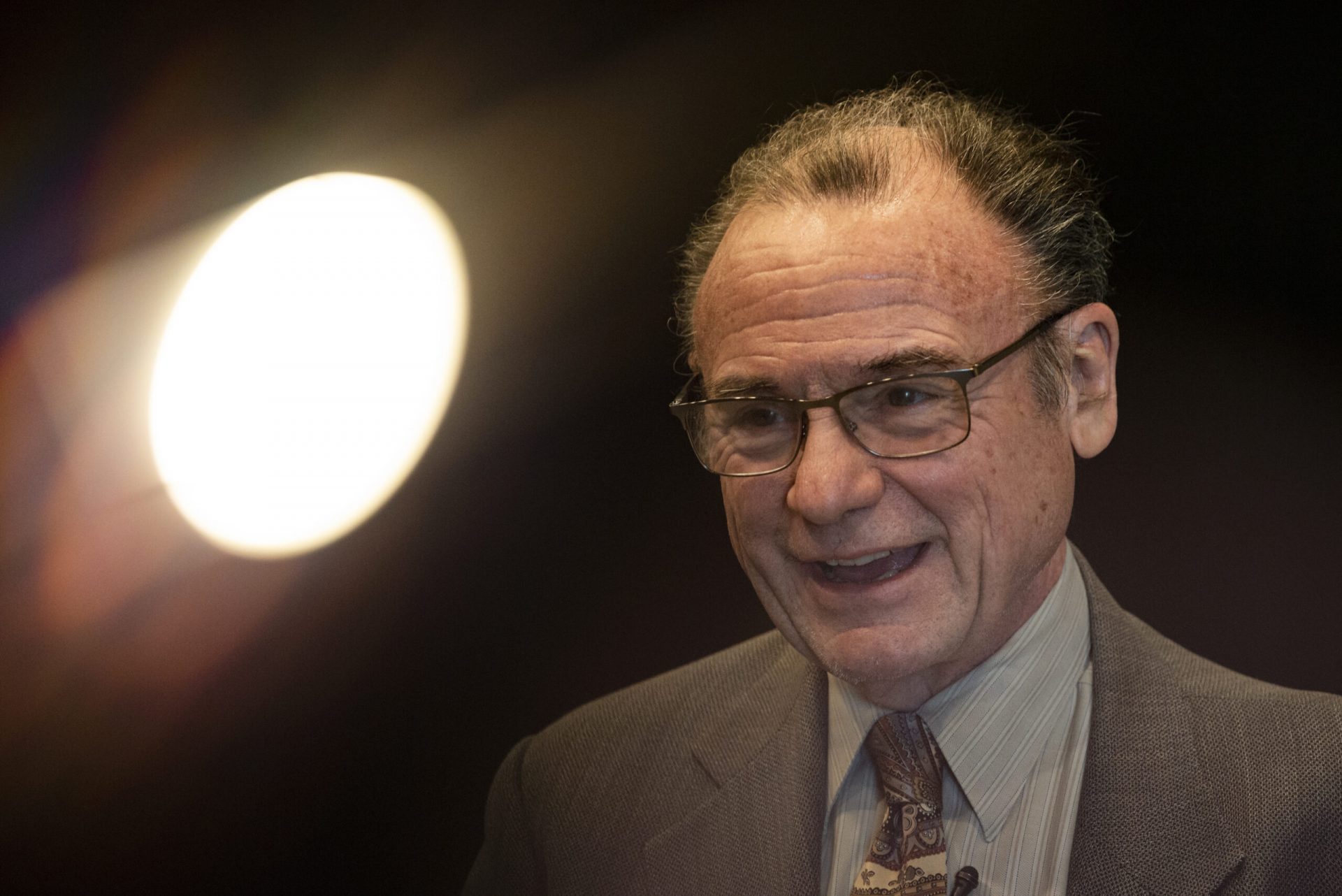Changing demographics, the economic and energy outlook and inflation were among the topics Ray Perryman, president and CEO of The Perryman Group, spoke about during a media availability Thursday.
Perryman spoke at a luncheon at the Odessa Marriott Hotel & Conference Center. The Perryman Group is an economic and financial analysis firm headquartered in Waco.
“… In terms of the economy, a lot has changed. … Texas was an all energy economy when I first started doing this, just beginning to dabble into technology, as an example. That changed a lot. People began to take a different view of economic development over the years and in how that works. That’s changed a lot. Obviously, economic policy (has) changed a lot,” Perryman said.
“Inflation was basically institutionalized. And of course, the savings account … a simple savings account, routinely paid 5 1/4 percent interest. … You had inflation built into the structure of the economy. We no longer have that. There are a lot of things that are very, very different. And obviously, recently, we’ve been through a pandemic, which is something that we haven’t seen before. So a lot of things have stayed the same. The basic fundamental drivers of the economy go back to Aristotle, at least, but a lot’s changed,” he added.
For the typical person, their first concern is whether they have a job. Perryman said employment rates are getting back “pretty close” to where they were before.
The price of gasoline is the other component in how people gauge inflation “because they see it every day as they drive …,” he said.
“The price of gasoline’s up 48%. So most people’s perception of inflation is wow, this is terrible. But that’s a fairly small percentage of their total consumption,” he said.
He added that the Permian Basin was hit much harder than other places by the pandemic, because one of the things that COVID hit hardest was energy.
“And we’re a part of that, so we have suffered more and have come back a little slower than some of the others. Having said that, I think we will have a growth rate we’re projecting … a growth rate here over the next five years that is well above the state and the nation,” he said.
Perryman said part of what is going on right now is that there were a lot of wells that were completed but not brought online when the pandemic hit.
“So the first batch of increase in production didn’t bring a lot of jobs and investment with it that you might normally see. Part of that is catch up because there’s only so much of that production getting back up to levels; companies start to invest again, so we’re beginning to see some that happen.”

Perryman projects a bright, short-term future, but in the long term a critical piece of the world economy faces two challenges.
“We’ve got to educate folks. We’ve got to show folks just how important we are as a part of a solution. That involves more than just running ads on TV. That involves using the intellectual capital of all the people who know things about energy out here to help drive more efficient use of water; less release of carbon in the atmosphere, all those kinds of things that we have the brainpower, the intellectual property of the energy industry, to do right here. …”
On the subject of demographics, Perryman said while people are worried about inflation, Amazon’s quarterly earnings, or what the Federal Reserve is up to, 20 years from now, demographics will matter.
“And it always matters. … It’s a fundamental driver of the economy. If we look at the demographics in Texas right now, we have great opportunities because unlike any other place … in the country, we have young people. We have a growing pool of young people and labor force is going to be a major need in the future. We also have a desperate need to educate those folks from kindergarten all the way through to adulthood,” Perryman said.
“The literacy rate at level three, the basic literacy rate that allows you to do most jobs and have some skill associated with them, in the Permian Basin, the adults that have literacy that meet that literacy standard is 31.6%. … We could solve our workforce problem that we have right now simply by getting our adults up to level three. … If we could get up to the state average, which is not that great in literacy, we could have 45,000 more workers and skilled workers in the Permian Basin right now …,” he said.
Perryman said the way the demographics are shifting, the growth is with Hispanics and lower-income white people.
“… It poses some real challenges because those folks just don’t control the wealth that you need to provide your students with the opportunities that they need,” Perryman said.
“You have something come on like a pandemic (and) 11% of the kids in Texas had no contact with school for a year. That’s because they didn’t have broadband and they didn’t have access to someone who could get them access to broadband. You have those kinds of issues that we need to address. If a kid is doing okay, but they need a little tutoring in one subject, those families don’t have the resources. If you need to buy software to help them with enrichment programs, they don’t have the resources. So … there’s a lot we need to do in terms of education,” he added.
Perryman said if Texas maintains its education system at the quality level it is today from preschool through graduate school, if the same graduation rates and placement rates are maintained and demographics continue changing the way they are, 15 years from today, the average person in Texas, excluding inflation, will have $6,000 less in annual income to live on.
“What that means is we’re suddenly a state that doesn’t have a skilled workforce. We’re suddenly a state that has more financial needs. We don’t attract all these companies to the state because we don’t have a workforce. And we have the needs that that creates, so we have to impose taxes to meet those needs so we become a low-growth, high tax state …,” Perryman said.

Energy has changed not only in the last 20 years, but in the last couple of years.
“Frankly, Washington has it completely wrong and a lot of things are going on right now. We’re moving in some directions we don’t need to go. Climate change … is very real. Everything you hear about climate change is real. Everything you hear about the solution is not practical and not realistic. You can’t get there without hydrocarbons. The oil and gas industry has to be a partner, not a problem in this solution. And Washington and Glasgow and everywhere else needs to realize that,” Perryman said.
“… What we can do and what we have to do is we can burn petroleum clean. We can use petroleum as a part of the solution. And a lot of that activity is already taking place; the big Nacero announcement here in this area. They’re going to take natural gas and turn it into gasoline and reduce emissions 60%. That’s very important.”
“New technologies are extracting hydrogen from natural gas. That’s very important and renewables are very important. I’m not denigrating them; I’m just simply saying they can’t get there as fast as they need to with the reliability they have to meet the needs. They will be a bigger percentage of the total, but they will be nowhere near all energy we need. Today, 57% of the energy in the world will be supplied by oil and gas. If you add in coal, you’re up to 85. If you add in nuclear and hydro you’re up to 96. Four percent is everything else — wind, biomass, solar, hydrogen; all of those things. And that’s after 10 years of phenomenal growth. …”
This past year, he said, world demand for electricity grew 100 gigawatts; renewable energy capability grew 35 percent.
“That was by far the biggest growth in history for renewables. We only got 35% of what (we) needed, even in (a) record year. … The bottom line is that the math doesn’t work,” Perryman said.
He added that it makes it incumbent on the energy industry to get the message out that they are part of the solution.
“… Wall Street thinks we’re going to get rid of hydrocarbons and all the car companies think they have to get rid of gasoline powered engines. … That affects the amount of capital that can flow to the energy industry to do the things we have to do out here. But despite all that talk, demand for oil coming in December, certainly by January, is going to sit at an all-time record. … Permian Basin production is projected in December to be 4.95 million barrels a day. That’s the most it’s ever been. North Dakota is no longer the number two producing state in the country. New Mexico is because it’s part of the Permian. The economic engine that starts here and flows through pipelines to the Gulf Coast and ports there and then goes back to the rest of the world is the single most important driver of global growth in the world,” Perryman said. “And it starts right here and that’s a message that has to get out.”
On inflation, Perryman said it should come down in the late first quarter or second quarter of next year.
He added that inflation is coming from demand and supply. People are out and about again and they have some extra cash.
“… The way I think about this is, think of the world economy as the biggest engine you could possibly imagine — $100 trillion engine. It’s been coming down the road pretty well for about 10 years; doing just fine. No big problems; an oil change every now and then. All of a sudden, it stopped. And when I say stopped, I don’t mean we tapped on the brakes. When we turned off the key, jumped out to hit a tree, we took a sledgehammer and banged on it for a while, and then we left it out (in the) elements for a year,” Perryman said.
When it started up again, it was a little rusty. The supply chain isn’t functioning like it should. Ships are stuck at ports and once the goods get here, it’s hard to get on trucks.
He added that it takes time to get things going again after “massively shutting down the world.”
But the nice thing about a market driven world is as soon as you create a problem, you create an incentive to solve the problem.
“It’s going to take a few more months, but we’ll get the supply chain working again, demand settles out, people get past this kind of euphoria … things get back to normal. You start seeing inflation come down …,” Perryman said.

